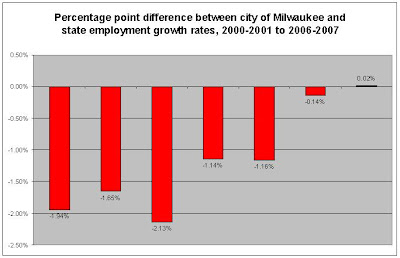Just released - Early childhood education reseach
Overall, existing research largely supports the connection between higher quality early childhood programs and long-term benefits including improved school-readiness, improved social skills, higher IQ scores, higher standardized test scores, decreased crime and delinquency, and greater earning capacity. Parents of children in high quality child care also benefit as they are better able to find and keep work. Societal benefits from higher quality child care include reduced crime costs and reduced welfare use. Further, increased earnings by early childhood program participants once they reach adulthood will result in increased income tax revenue.
Given the benefits of early childhood care and the size of the industry, region-wide economic development is a likely result of greater public investment in high quality care.
The Public Policy Forum intends to change the way policymakers view early childhood programs by clearly showing that the benefits of quality early childhood education reach beyond the program participants to benefit all of society through economic development. Future project activities will include: surveys of parents and care providers designed to assess current child care use and quality of care, a cost-benefit analysis of an optimum early childhood education system in southeast Wisconsin, and measurement of regional benefits of the current early childhood education system in three components: (1) economic, (2) educational, and (3) societal.





